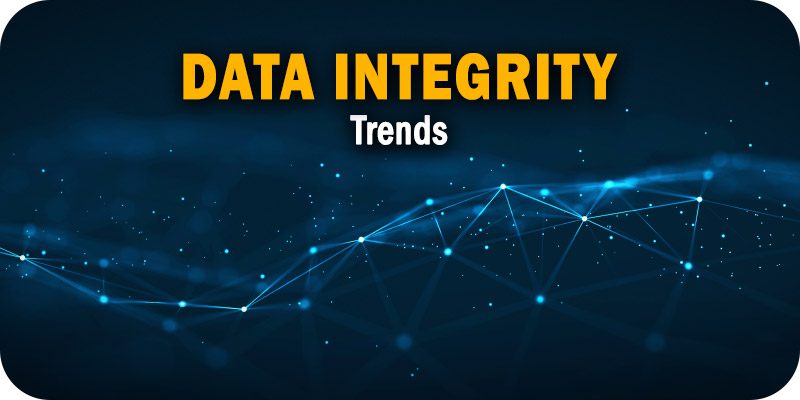Did AI blow up your cloud bill?

Despite its substantially lower operating costs and the potential value that AI
and machine learning can bring to a business, the return falls short in many
cases. 2022 was a year of huge cloud cost overruns. An enterprise’s misuse of
cloud resources in general creates most cloud cost overruns. In some cases, this
means choosing cloud AI/ML systems when more pragmatic alternatives could return
more value. Many AI/ML systems are much more expensive to maintain. Specialized
skills are needed to build and deploy these systems and then to operate them.
“Cloud AI” just means that the processing and data storage are outside of the
enterprise. Massive amounts of general purpose and purpose-built data are needed
to drive AI engines, and that data must be stored, managed, and secured ongoing.
You must also deal with data compliance. In many cases, the business has custom
needs that require custom training data that isn’t part of the general-purpose
transactional business database but is a one-off to support a specific need of
the AI system. That means more storage, more labeling, more streaming, and more
operational costs.
India’s Digital Personal Data Protection Bill: What works, what it lacks

“In areas such as itemized notice, a clarity is needed in its role in the
consent,” said Vinayak Godse, CEO of the Data Security Council of India. In
addition, the bill does not specificy when consent is needed from the user — for
example, whether consent is required for collection of information for internal
use, or only when data is being sold to third parties. “Industry is cautiously
examining the idea of consent manager, a solution suggested in the draft,” Godse
said. There is also confusion regarding the issue of deemed consent. The first
clause in the bill regarding deemed consent says that it occurs “when a user
voluntarily provides data and it is reasonably expected that she would provide
such personal data.” ... The second clause pertaining to deemed consent,
however, is much broader, stating that deemed consent would be considered “for
the performance of any function under any law, or the provision of any service
or benefit to the Data Principal, or the issuance of any certificate, license,
or permit for any action or activity of the Data Principal, by the State or any
instrumentality of the State.”
Outsourcing’s dark side: How to stop the surge of supply chain attacks

Alongside lags in investment, many organizations’ cybersecurity programs have
fallen behind. Adequate action isn’t taken to secure remote access, which
leads to far too many third parties accessing internal networks with zero
oversight. A full 70% of organizations surveyed reported that a third-party
breach came from granting too much access. But, half don’t monitor access at
all — even for sensitive and confidential data — and only 36% document access
by all parties. They simply take a “hope it doesn’t happen” approach, relying
on contracts with vendors and suppliers to manage risk. In fact, most
organizations say they trust third parties with their information based on
business reputation alone. However, hope and blind trust are not strategies.
Many bad actors play a long game. Just because vendors aren’t breaking
your systems now doesn’t mean hackers aren’t involved in malicious activity
undetected, gathering intel and studying workflows for a later time. Not all
companies have ignored threats. The healthcare industry has become a leader in
solving third-party security issues because of the need to comply with audits
by regulatory bodies.
Three Essential Data Integrity Trends to Watch in 2023

As challenges with data quality increase, companies will start to become more
agile in their approach to ensuring the health of their data. We are already
seeing that many businesses are turning to data observability to proactively
discover issues impacting the reliability of data – meaning bad data can be
stopped in its tracks before it has a chance to negatively impact
decision-making. The best data observability tools use advanced technology to
apply machine learning intelligence, watching for patterns in enterprise data
and alerting data stewards whenever anomalies crop up. It enables business
users to proactively address potential problems as they happen, resulting in
healthier data pipelines, more productive teams, and happier customers. Data
governance has historically been viewed as a necessary tool to help drive
regulatory compliance or policy management. But as organizations increasingly
seek to drive advanced analytics initiatives, and get more sophisticated in
how they derive business insights, the role of data governance has evolved
significantly.
HR trends in 2023 that will push the envelope even further

We see more and more businesses promoting from within and providing more
internal employee training programs and opportunities. This is a result of an
attempt to retain workers at a higher rate and is in part a response to a
decreasing talent pool. According to a Springer report, nearly 50% of the
world's workforce will require retraining or upskilling within the next five
years. Modern job roles are increasingly replacing conventional job
responsibilities. Organisations earlier used to place a lot of emphasis on
degrees to evaluate candidates' qualifications. While academic credentials are
still important, many recruiters have begun looking at particular skill sets
instead. The key to technological progress is reskilling and upskilling
workers in areas of need, including artificial intelligence (AI), machine
learning (ML), DevOps, etc. Employers must identify the talents they require,
communicate those needs, and create systems for attracting, retaining, and
training new employees. In 2023, we foresee a few more trends that will demand
our attention.
5 GraphQL Trends to Watch in 2023

GraphQL helps expose fields in an easily consumable manner. But it’s also good
for aggregating disparate microservices into a unified schema. As such, it is
often used as a meta layer that combines multiple REST services, databases and
even GraphQL schemas. For the time being, it appears that REST has staying
power. And it’s unnecessary to migrate all REST services to GraphQL. Looking
to the future, it is more likely to be adopted as a layer on top of existing
REST APIs. Combining multiple backend services under the hood and exposing
them in a unified schema creates a more usable, localized interface that
frontend developers can work from. In the future, GraphQL might become a meta
layer for more organizations, increasing the discovery of internal services
and helping teams reuse internal microservices. ... However, there’s a
downside to centralizing with a unified graph. Different internal teams or
partners might only need access to a particular set of functions. Giving the
entire schema to every person who walks through the door would be TMI, not to
mention a potential security risk that breaks the rule of least privilege. So,
the idea of a subgraph has gained traction.
Data Science vs Software Engineering: Do You Know the Difference?

Data Science and Software engineering has too many qualities in common there
is a hell lot of confusion regarding where one end and where the other starts
invoking a typical data science Vs Software engineering haze. ... To
understand what data science Vs software engineering is all about, to their
nitty-gritty, one should get to know what they have in common. Going by the
pace at which the software sector is growing, it is pretty much evident that
there is an urgent need for the development of digital technology. SaaS, a
sector that is playing a crucial role in delivering critical software services
to companies, has become the quickest-growing sector. The growth of services
like cloud computing technologies, open source, programming services, and
systems services has aided to a great extent in the development of advanced
technologies like machine learning, artificial intelligence, and computer
vision which depend on data and data analytics. Notwithstanding the
dependencies, data science and software programming share a few stark
differences.
How Will Tech Jobs Change in 2023?

In 2023, people could actually start understanding what hybrid means, said
Pilar Orti, director of Virtual not Distant, which offers training for
managers of remote teams. “All it means is you are not all day in the office,”
Orti told The New Stack. “Doesn’t tell you anything about the culture,”
including if it embraces flexibility and autonomy or is still very
office-based. Right now, Orti thinks most companies are throwing the word
“hybrid” around to mean the separation of when you want to be social at the
office, and when you want to really focus at home. Jānis Dirveiks, an
Agile coach, has found flexiwork red flags in job descriptions where companies
want to rank for terms like remote and hybrid, but don’t offer the culture to
back it up. These tags only refer to physical location, Orti agreed. “What’s
not quite there is the schedule flexibility. Most organizations are still hung
up that certain things can only be done when you’re together, whether in the
same space or online.” This uncertainty will only emphasize the tension and
divide she witnesses in larger organizations between who can work from home
and who cannot.
Top 9 challenges IT leaders will face in 2023

Gil Westrich’s company, ClearML, is benefiting from increased adoption of
artificial intelligence and machine learning (ML) technology. But the CTO and
co-founder says that scaling to meet that demand presents its own challenges,
which require self-reflection. “How do we grow our business responsibly?” he
asks. “How do we get the talent we need? Given how competitive the technology
and associated talent market is, companies have to clearly map out their plans
for business growth, ensuring they are as comprehensive, considered, and
responsible as possible. We want to make sure our roadmap is robust.” Tyler
Derr, chief technology officer at Broadridge Financial Solutions, is also
concerned about how to address challenges that come with growth. “Recent
market volatility has added to the complexity of delivering high-quality
products and services,” Derr says. “Organizations will need to consider when
and how to invest in proprietary innovation or partner with
industry-outsourced solutions balancing cost and speed to market, while
bringing to life a robust digital roadmap with clear and actionable objectives
and key results.”
Want to be a data leader? Here are 8 attributes you’ll need

Data is worth nothing if it’s not informing decision-making, which requires
somebody to put it into a relevant context for the business. To identify
context, data must be applied to the circumstances at any given point in time
for all of those who need it. This involves embedding necessary tools and
applications, such as business intelligence (BI), into the most popular
applications used by all employees. That way, data finds them – not the other
way around. “By doing this, employees can do their best work with optimal
information anytime, anywhere and on any device,” says Brian Gentile, chairman
of the board at cloud data vendor Matillion, “to help them make those all
important business decisions that may impact on the organisation’s future.”
Many data crunchers succumb to the pressure of hitting this month’s numbers,
which ignores the bigger picture and can negatively impact the longer-term
customer experience. A true data leader will show an institutional commitment
to balancing quick, lightweight testing with longer-term longitudinal
studies.
Quote for the day:
"People will not change their minds
but they will make new decisions based upon new information." --
Orrin Woodward
No comments:
Post a Comment